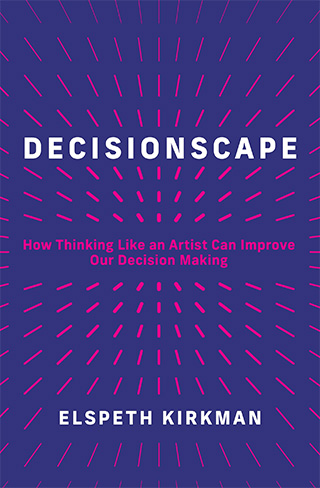How Behavioral Science Can Help Us Find Meaning in Our Work

Cheri was 18 months into a two-year role as a child protection worker when I met her. I was assigned to do a ride out with her: eight hours together covering the area around a city somewhere in the United States South. Cheri was warm, open, and clearly brilliant at her job. She was, and for this I was very grateful, the kind of person I knew would make a summer’s day with no air-conditioning as fun as possible.

The job is pretty much what you’d expect. Child Protection cases get flagged to a central call center, and the ones that seem especially serious get referred to a team for immediate examination. This team is made up of social workers like Cheri. Each one has around 30 cases at any one time and a period of a week or so to investigate them. There’s some desk work, but most of it involves driving to people’s houses without an appointment and asking them to let you in so you can, as far as they are concerned, assess whether their kids should be in foster care. When I got in the car with Cheri, she said, “I am so glad they sent you today: I’ve got three places out east that I can’t go to alone.” And off we went.
After just one morning of observing Cheri’s caseload, I felt sad and stressed. As we ate lunch — a pasta salad from home for Cheri and a hot dog from the 7-Eleven for me — I was eager to review the day so far.
I clumsily asked, “So how do you . . . manage all this?”
“You mean everything in my face all the freaking time?” She laughed. “I just try not to think about it too much, that’s my motto. Thinking about it won’t make it better.”
For Cheri and the hundreds of thousands of others doing jobs like hers in the United States, the decisionscape — a word I use to describe the myriad ways that our decisions are influenced — really is “everything in your face all the freaking time.” Someone in the governor’s office or a federal desk job works at a distance. They think about the big picture, but every small cut they make, every adjustment to the pathways through the system, can have huge repercussions for someone on the front line. Checking there is running water in a house, as Cheri did on every call, makes a lot of sense on paper, but when you forget because you’re too busy planning your exit route it means you have to add a 20-mile trip to the end of your day to check that box.
Just before we said our goodbyes, Cheri told me that she thinks of faucets involuntarily before she falls asleep. She laughed, as though she imagined it sounded silly and trivial, but it didn’t. While seemingly mundane, the simple act of checking faucets for running water became a kind of ritual. Her comment made me think of something called the Tetris effect, a phenomenon whereby people who play a lot of Tetris see the blocks falling in front of their eyes as they try to sleep at night. The Tetris effect extends far beyond the realm of retro gaming. When we see the same patterns throughout the day, we find our brain struggles to forget them. Lawyers and auditors might become obsessed with poring over detail, looking for mistakes, for example. In hindsight, Cheri’s hypnagogic faucets were a red flag: She couldn’t switch her brain off from the unbearable weight of her caseload.
When I emailed Cheri a couple of months later to ask her a question about something, I got an automatic response saying her account was no longer active. When I checked in with her boss, I learned that she had left both the job and the profession. After that I stopped wondering why people burn out in jobs like these and started wondering how anyone manages not to: With no distance whatsoever between your professional decisions and the consequences for people’s lives, how do you find ways to cope?
Being connected to others who are doing the same job seems to help give us a sense of perspective and a frame of reference.
This is the kind of question that motivates Harvard professor Elizabeth Linos and her colleagues at the People Lab. Among other things, the lab studies burnout, a syndrome inducted into the International Classification of Diseases by the World Health Organization in 2019. Burnout results from “chronic workplace stress that has not been successfully managed.” Its symptoms include exhaustion, negativity, psychological distance from one’s job, and reduced professional efficacy. It is also associated with reductions in creativity and some aspects of executive function. In other words, burnout is bad for workers and bad for employers.
Because burnout is caused by unmanaged stress, we tend to think that dealing with it will require investment in improved management and extra capacity to give individual workers more slack. While these investments would certainly help, they are often beyond the budgets of managers or departments looking to help their staff. As such, there is a pressing need to figure out ways to help people in roles like Cheri’s without extra investment.
If burnout is partially caused by “everything in my face all the freaking time,” as Cheri put it, it is perhaps unsurprising that finding a sense of purpose that brings perspective to your work can help protect against burnout. This may be something you bring to work with you already. For example, some research shows a positive correlation between religious and spiritual beliefs and lower levels of burnout among workers. However, at least in jobs that do inherently have a meaningful purpose, focus on the bigger picture can also be induced through surprisingly simple interventions. One such approach is to make sure that workers are connected to a wider community of people who share their experience. Being connected to others who are doing the same job seems to help give us a sense of perspective and a frame of reference. This isn’t about stuffing everyone into the same office and letting them work side by side. The important part is sharing stories about the common experience.
To see if sharing stories could help prevent burnout, Linos and a small team worked with 911 dispatchers across the United States. 911 dispatchers occupy an unusual professional niche. They are often exposed to traumatic incidents, and their actions can make the difference between life and death, but, because they sit behind a desk, they are generally treated as clerical staff: They might be able to get a wrist support to protect against carpal tunnel, but they’re unlikely to get access to counseling services to help with post-traumatic stress. There is another important deficit in their jobs too: status and respect. 911 dispatchers aren’t being thanked for their service or told they can board flights before everyone else. They are just seen as regular call center staff. Given that it’s difficult to magic up structural support and elevate the status of an entire profession, it seemed unlikely that something as basic as sharing stories could make a meaningful difference for these workers. But it was worth a try.
So Linos and her team split the 911 workers into two groups. One group carried on as usual. The other saw a minor change in the rhythm of their week: these dispatchers got an email from their supervisor asking them something like “What would you tell a newbie about what it’s like to be a 911 dispatcher?” or “What are the characteristics of a good mentor and who has been a good mentor to you?” The questions changed, but, along with the answers that were also shared with the group, they were all designed to do the same thing: get the 911 dispatchers to reflect on the fact they belong to a wider support network of people just like them. Both groups — those who got the emails and those who didn’t — completed follow-up surveys designed to test whether they were experiencing signs of burnout, and all the participating departments shared information on the number of sick days their workers took and whether any of them left the job.
The stories made a difference. Resignations dropped by more than half in the group who received the emails, and they scored about eight points lower on the clinical scale that measures burnout. “What that translates to,” says Linos, “is approximately the difference between being an administrative assistant versus being a hospital social worker.” It costs close to nothing to organize and send these emails, but, at least in the organizations that took part in this study, a city with 100 dispatchers would save more than $170,000 each year if they did something like this; that’s equivalent to the cost of three full-time staff.
Even for managers who don’t have the time to figure out how to get staff to share their experiences via email, there is often someone in an organization who could if only they were allowed to use their natural superpower. Many years ago, I was working with a local authority struggling with staff engagement. Part of this work involved talking to workers from every one of the hundreds of services run by the council to figure out if there were common stressors. Everyone was stressed, and understandably. The whole council was under enormous cost pressures at the same time as demand for its services was growing dramatically. We weren’t equipped to diagnose burnout, but I am pretty sure many of the people I interviewed were experiencing it at some level.
One of the hardest teams to find time with was the school-placement team. Their job was to match children to schools, juggling parent preferences with limited spots. It’s seasonal — and stressful — work. It seemed almost pointless talking to a team that had no time and was so obviously going to be stressed by circumstance. And then I met Zaynab.
Zaynab was the team leader, who had been described to me by members of the leadership team as “quite difficult,” “a lot,” and “very passionate, which can be a challenge.” When I walked into her office, I was full of dread. I gave my customary apology for taking her time in a very busy period, but she wouldn’t hear a word of it. She was warm and enthusiastic and rightly proud of the fact her team had the highest engagement scores in the department, something no one had mentioned while they gave me their scathing briefings. When I asked her to describe her work, she said, “People think it’s moving things around in spreadsheets, but my job is setting every child in this borough up for success. Their future rests on what we do.” We talked a little about how the team had been very low when she came into the role.
“One thing that I saw right away,” she said, “was that they weren’t thinking about the point of all this: the end result.” So she started trying to show them how important their work was. She asked parents whose problems they solved throughout the year to write thank-you emails to the team. Some sent cards with pictures of their kid in their new school uniform, and Zaynab stuck them on the cheap dividing walls between the desks. She made a progress chart to show the team how much of the job they had already completed. This was a particularly savvy move, as most placements are done automatically with no issues, which means it always looks like you’ve got a massive head start on the process with minimal effort. She sent an email every week celebrating the resolution of difficult placement challenges as well as other big events going on in the team. And she got the department head to sign thank-you cards for each team member at the end of the placement season.
When we find we have fallen a little out of love with something, writing about why we thought it was so great in the first place may rekindle the flame.
Zaynab had not gotten her ideas from management books; she seemed to intuitively know how to pull her team’s focus to what matters and keep them motivated. But research does support much of what she was doing. For example, some years later I read about an experiment run by professors Adam Grant and David Hoffman to look at what motivates workers. They were trying to figure out how to make fundraisers as effective as possible. The fundraisers made calls to try and drive donations, and so it was possible to measure the number of dollars generated in fundraising by each team member. Grant and Hoffman knew that the team was often given pep talks by leaders, but they wondered if this was the most effective way to get them motivated.
Instead, they — like Zaynab — speculated that it might be better to hear directly from someone who has benefited from their work. To this end, the fundraisers were split into groups. Some heard a motivational talk from a leader, and some heard a college student whose scholarship was funded by the donations they generated talk about the impact of the money. The amount each fundraiser generated in donations was then observed over a three-month follow-up period. Those who heard from a leader didn’t improve their performance. The student, however, had a huge effect on performance. Fundraisers who heard the student’s testimonial almost quadrupled their fundraising, going from an average of $2,459 to $9,705.
In another study, by Nicola Bellé, Italian nurses were asked to write endorsements for a volunteer project (supplying medical aid to a war zone). While the campaign was successful in its primary aim, attracting more volunteers, the researchers were also interested in something more unexpected: the effect of writing such an endorsement on the nurses who wrote them. Specifically, could persuading someone else of the benefits of this project improve the motivation and performance of the persuader? The results were striking. The act of self-persuasion initiated by writing the endorsement increased productivity by 15 percent while also improving accuracy 30 percent. These results were strongest for those employees who were already motivated. This suggests, fairly intuitively, that self-persuasion might work best when it requires someone to rediscover their passion for their work rather than have to generate motivation from scratch. When we find we have fallen a little out of love with something, we too can write about why we thought it was so great in the first place. It may just be enough to rekindle the flame.
Zaynab and her unusual ability to keep the higher purpose of her work in the crosshairs stuck with me long after that project ended. It wasn’t just that she was such a force of positivity, it was the fact that her enthusiasm and vision were seen as irritating to those above her. Surely if your organization has a Zaynab, you should be trying to get her method copied across as many other teams as possible.
Perhaps the leadership’s inability to see Zaynab’s broader potential was a kind of distance problem of its own. There is ample research demonstrating that our ability to creatively problem-solve can improve when we are working on something that feels more psychologically distant. This is because we think more abstractly, freeing our minds to explore different non-obvious dimensions of a problem. When we fixate on specific details of a problem — in this case, low staff engagement — we become inflexible and incapable of creative thought.
Our ability to creatively problem-solve can improve when we are working on something that feels more psychologically distant.
Burnout is a serious problem, but fortunately, there are steps we can take, both individually and organizationally, to mitigate it. Joining groups with others who share similar experiences to us — be that a profession, a health condition, or a social identity — can help give us perspective when we feel overwhelmed or burned out. There are many such groups online. I, for example, am in an amazing parenting group populated by people with a mutual interest in a specific podcast about serial killers. We share stories, ask for advice, and generally cheer one another on: it’s surprisingly wholesome given the nascence!
Sure, these things seem small — but the cumulative effect can be significant. By finding ways to create psychological distance and reconnect with the purpose in our work, we can all become a little more like Zaynab.
Cheri and Zaynab are pseudonyms used to protect the anonymity of those who have participated in my research.
Elspeth Kirkman is Chief Programme Officer at the innovation agency Nesta and a Visiting Senior Research Fellow at King’s College London’s Policy School and Exeter University’s Business School. Working at the intersection of design, data, and experimentation, she is the coauthor of “Behavioral Insights” and author of “Decisionscape,” from which this article is adapted.



